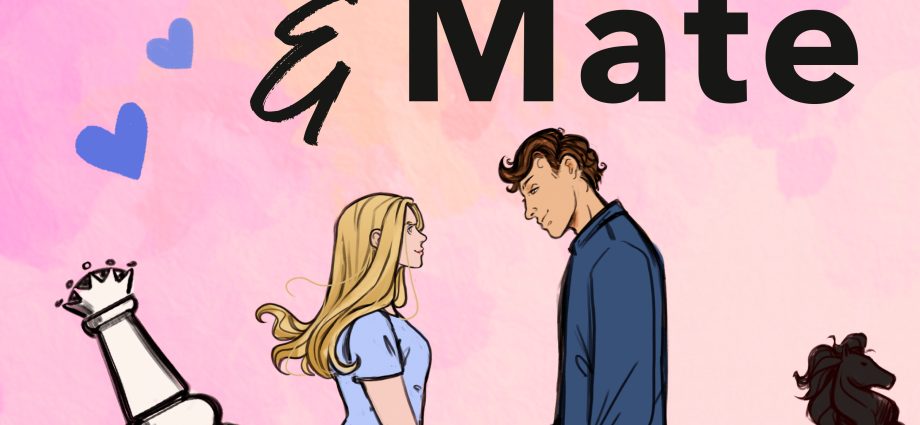Rating: 3.5 out of 5
After writing the viral “The Love Hypothesis,” Ali Hazelwood became a household name among romance novel enthusiasts. Although I hadn’t read “The Love Hypothesis,” I was eager to read Hazelwood’s “Check & Mate” to understand her hype—and although it wasn’t an earth-shattering read, I was pleasantly surprised by its swoon-worthy moments and vivid writing.
“Check & Mate” is a novel written from the perspective of 18-year-old chess prodigy Mallory Greenleaf, who swore off playing chess at age fourteen after it ruined her family. Four years later, when her friend peer-pressures her into playing again at a charity chess tournament, she defeats world chess champion Nolan Sawyer—to the world’s surprise and her own. She rapidly gains fame, a renewed career in chess, and an infatuation with Nolan, who is supposed to be her rival but is drawn to the challenge she presents. Although this plotline is unrealistic, the novel gets away with it because it’s meant to be a lighthearted read.
The actual romance between Mallory and Nolan had endearing moments that made me squeal (and occasionally laugh) out loud. Their meet-cute was somewhat disappointing: Mallory defeats Nolan at the charity chess tournament, Nolan stares at Mallory in a rather strange instead of alluring way (“He looks. After ignoring me for twenty-five moves, he just looks. Calm. Inquisitive,” Hazelwood writes), and Mallory runs out of the room without any explanation. However, heartwarming moments like Nolan telling Mallory a series of chess moves as a bedtime story make readers root for their relationship.
One thing that doesn’t come across, however, is the enemies-to-lovers plotline that this novel was advertised for, because Nolan always offers moral support to Mallory, even as her competition. For example, he (spoiler) asks her to be his second for the World Championships (essentially, an assistant that studies his plays and helps strategize), even though it would give her an advantage against him in future matches; he’s more focused on the joy of playing chess with her rather than winning against her. It’s Mallory’s denseness and self-imposed duty of providing for her family, rather than animosity between them, that prevents them from forming a relationship.
Speaking of Mallory’s commitment to her family, at the start of the novel, Mallory says she stopped playing chess because of her absent father and the need to provide for her family with a stable income, leaving the reader in prolonged suspense about what exactly caused her to quit. The explanation Mallory ultimately reveals, however, feels like a weak justification for her decision to quit chess and confused me more than it satisfied my curiosity.
Hazelwood tries to do too many things at once: she presents a rivals-to-lover trope, a woman versus society conflict, a found family, and a glimpse into male-dominated, professional chess. These are too many competing ideas, and I would have enjoyed the novel much more if it had developed and tied together just a few of them. This way, Hazelwood could have also better developed the themes of balancing sacrifice for family with personal interests, and persevering through sexism.
“Check & Mate” does what it’s supposed to: although the writing and themes aren’t very sophisticated, it weaves in humor, imagery, pop culture references, and adorable romance scenes (with way too many chess puns, I might add) throughout the novel, with an epilogue that leaves readers satisfied. Although it isn’t a successful enemies-to-lovers novel, it’s perfect for a lot of laughs, smiles, and a glimpse into a world of romance and chess.

